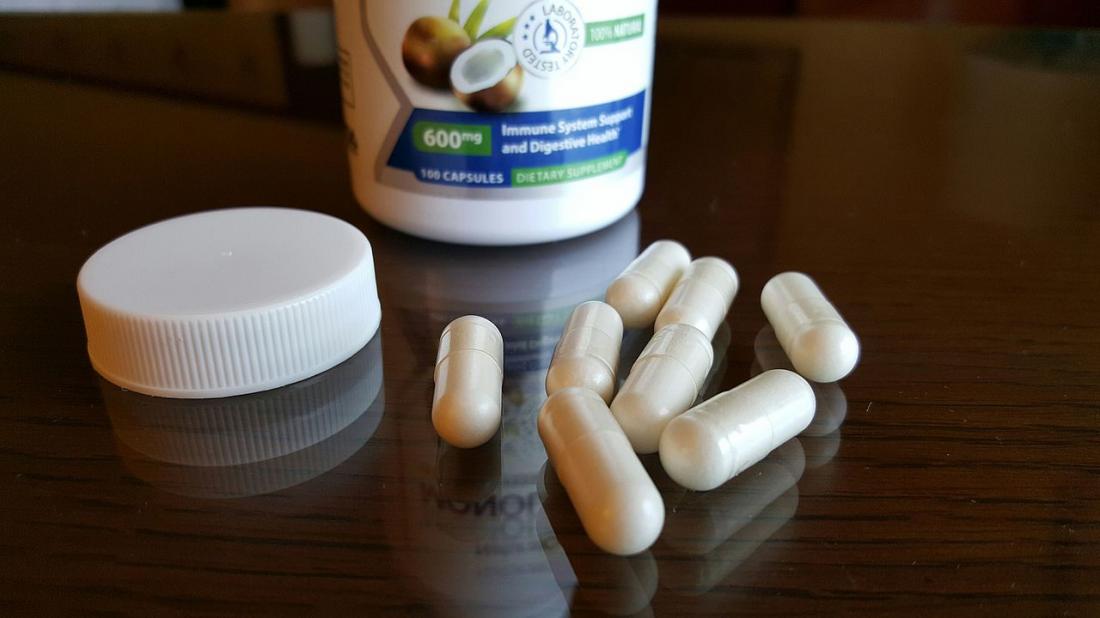Monolaurin Supplement Delivery Options - Which is Best?
The research below is offered for information and educational purposes only and is not intended to provide medical advice. Individuals are advised consult a medical professional to assist in the purchase and use of dietary supplements. See Terms & Conditions
Monolaurin is a dietary supplement metabolized from lauric acid. Lauric acid can be found in coconut oil and palm kernel oil, in addition to other natural sources like breast milk. When using monolaurin as a dietary supplement, there are a few options and formats to select from. Learn more about monolaurin in the detailed Essential Guide to Monolaurin. Here we explore some of the considerations when choosing how to take Monolaurin as a dietary supplement.
1. Pure Coconut Oil
Raw Coconut Oil
Coconut oil contains around 49% lauric acid. Since lauric acid is converted into monolaurin in the human body, you might assume you can get monolaurin through coconut oil without taking a supplement. Unfortunately, it is difficult to estimate just how much of the Lauric Acid from coconut oil is converted to monolaurin, but one article suggests that it is less than 6%. Given a therapeutic dose of monolaurin can reach upwards of 3 to 9 grams of Monolaurin, one would need to consume an unrealistic 100 - 300 mL of coconut oil per day (Ref #1).
2. Monolaurin Pellets (Ex: Lauricidin)
Pellets
Monolaurin in pellet form is popular amongst some brands such as Lauricidin, Inspired Nutrition, Tick Recovery, and others. Monolaurin in pellet form can deliver impressive volumes of monolaurin per dose, but may face some unwanted challenges. Some customers report finding undissolved pellets in their stool, suggesting that not all of the product is absorbed in the intestines after ingestion. Additionally, the delivery of the pellet is via a teardrop-shaped pellet which is made of glycerol. Glycerol may have adverse reactions with some individuals which includes stomach pain, dizziness, nausea, and diarrhea. (Ref #2) Some individuals have found travelling or daily routines with monolaurin pellets inconvenient, as they do not fit into pill organizers, purses, bags, etc.
3. Monolaurin Capsules
Capsules
Monolaurin in encapsulated form is by far the most popular form of the supplement. It allows a precise amount of Monolaurin to be delivered, and the capsule itself ensures complete digestion in the stomach and intestine where the product can be most effective. There are some important considerations when it comes to Monolaurin in capsule form:
Capsule Type: many capsules are made of animal gelatin (bovine or porcine) which may disagree with individuals on a vegetarian or vegan diet or those with religious considerations. Vegetarian (vegetable cellulose) capsules are available and availability varies by brand.
Excipient: a common excipient (also known as a "flow agent" - an essential part of the encapsulation process) for many supplements is magnesium stearate. Unfortunately magnesium stearate, a synthetic lubricant used by many brands, may have negative side effects such as gastric distress and slowing of absorption of the supplement. Magnesium Stearate may also suppress T- cells, an essential part of the immune response system (Ref #4). A natural excipient such as organic rice power can offer the same manufacturing benefit without the potential harmful side effects.
Additives: some brands of encapsulated Monolaurin may contain more than just Monolaurin. Some capsules may contain Inosine, Vitamin C, Silica, and other undesirable additives. These additives may interact with the principal ingredient or cause other unknown side effects. Purity of fill is the only way to avoid this.
4. Monolaurin Powder
Powder
Given the extremely soapy and bitter taste of Monolaurin, taking monolaurin powder is not typical or advised. If individuals have issues swallowing capsules or pellets, the power may be emptied into applesauce or another delivery mechanism (pudding, juice, etc). However, the strong soapy flavor will likely overwhelm the mouth depending on what is used. Consuming the straight powder is not recommended.
5. Monolaurin Tablets
Tablets?
In addition to its strong soapy taste, Monolaurin is naturally quite sticky. Therefore, it is not typically compressed into tablet format because most high speed encapsulation equipment would need to be stopped and cleaned multiple times per production run to ensure uniform tablets. Therefore, capsules have been widely accepted as the delivery mechanism of choice for Monolaurin.
Conclusion:
How to take Monolaurin is an individual preference and what works best for one individual may not be the right option for another. Regardless of which format you choose, all dietary supplements, including Monolaurin, should be taken under the supervision of a healthcare professional.
Looking to Try Monolaurin, but Not Sure Where to Start?
There are many factors which should be considered when choosing a Monolaurin brand, which include:
What Monolaurin source is best - Coconut or Palm Kernel
What is the recommended way to take Monolaurin - Capsule or Pellet
What is an excipient, and why does it matter - Synthetic or Natural
What hat to look for to ensure manufacturing safety - Certifications and Location
All of these questions can be answered in the comprehensive Monolaurin Buying Guide.
Looking to try monolaurin? Consider some of the products located on this external site: Shop Monolaurin.
References
Kabara JJ. Pharmacological effects of coconut oil vs. monoglycerides. Inform June 2005; Volume 16 p386-7.
Magnesium Stearate: Does Your Supplement Contain This Potentially Hazardous Ingredient? https://articles.mercola.com/sites/articles/archive/2012/06/23/whole-food-supplement-dangers.aspx




